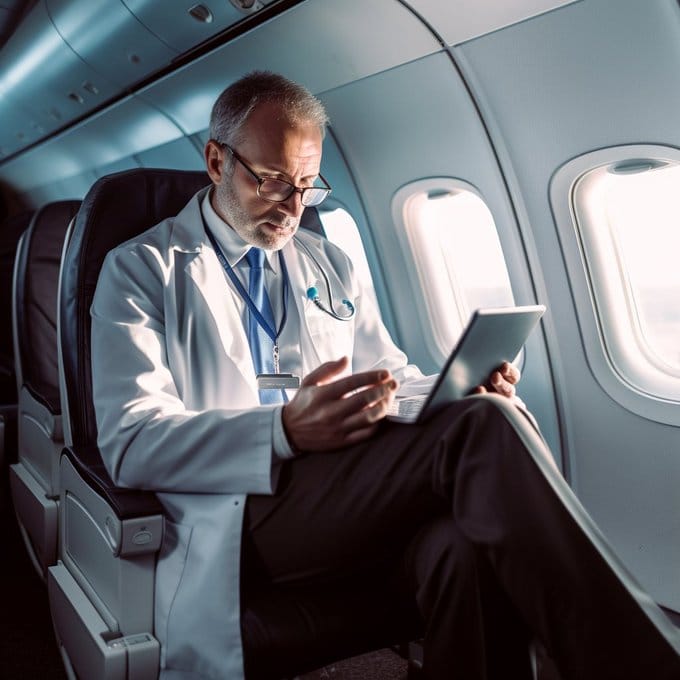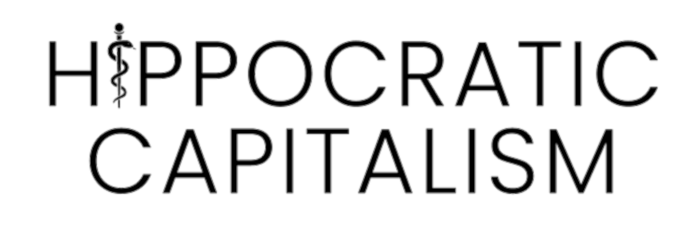Airplanes and Doctors

This past week, passengers aboard a Boeing 737 Max experienced the terror of a person-sized hole suddenly opening up in the side of the plane mid-flight. While no one was killed or seriously injured, it appears that they were extremely lucky. The plane had not yet reached cruising altitude, and the passengers nearest the hole were still wearing their seatbelts. If they hadn’t been, particularly the child sitting closest to the hole whose shirt was torn off by the violent wind, there almost certainly would have been deaths.
I’m going to take a risk here and blog about the event (and its relevance to healthcare) even though it will be quite some time before the NTSB determines the root causes. If it turns out that Boeing is entirely innocent, then I may need to come back and issue a mea culpa. But I won't hold my breath. Notably, Boeing’s CEO just released a statement acknowledging unspecified failings on the part of the company, suggesting that he might know something that we don’t (yet).
It’s likely that the Boeing 737 Max is familiar to you. You may have flown in one, and you may also remember the crashes a few years ago in which 346 people died. After the 2018 Lion Air crash, many people suspected pilot error and/or sloppy maintenance. After all, the airline operated out of a lower-income country and had some spots on its safety record. But then came a second similar crash in Ethiopia. And eventually a larger story came out about Boeing cutting corners on safety in its rush to get the Max to market. The following is documented in careful detail in the book Flying Blind by Peter Robison:
- Replacement of the CEO and other top leadership by Jack Welch-trained profit maximisers
- Marginalisation and demoralisation of engineers and safety personnel
- Successful political lobbying that reduced the independence and power of the FAA to oversee and ensure safety
- Hiding major known risks from pilots, who received minimal training on the new aircraft, and in particular were not trained on countermeasures in the event of a system failure
We don’t yet know whether the Alaska Air incident was Boeing's fault. In the mean time, FAA has grounded a large number of 737 Max planes until more is known about the root cause(s). And Zeynep Tufekci has a good piece in NYTimes this week that reassures us about the seriousness and professionalism of the NTSB and other groups who investigate air travel safety problems.
How does this all apply to healthcare?
- Professionalism: Just like aviation, medicine has a strong professional culture. Aviation’s culture prioritises safety, and medicine’s culture prioritises patient wellbeing more generally. Unfortunately, just like the engineers at Boeing, doctors and nurses have been increasingly disempowered and micromanaged by the suits. Over time this blunts their ability to take care of patients in the ways that they believe to be right.
- Regulation: Both aviation and healthcare are heavily regulated, but all regulations can be vulnerable to corporate gaming. Consider FDA’s famous revolving door: If you’re an FDA staffer contemplating a higher-paid job in industry, then how strict are you likely to be with the companies you might want to be approaching a few years from now for employment? It’s critical, therefore, to have mechanisms such as transparency, anti-corruption policies, whistleblower protections, etc. to protect the integrity and independence of these agencies. Even in the absence of frank corruption, companies tend to disclose as little as they can get away with in order to minimise regulatory scrutiny. Which is where lobbying and PR comes in, as companies attempt to discredit regulatory agencies in the eyes of the public, and to restrict their funding and in some cases even their authority (as Boeing did, when they lobbied successfully for FAA to use Boeing employees for inspection functions).
When allowed to do their jobs, professionals (including regulators) in both healthcare and the airline industry do a remarkable job protecting the health and safety of the public. Click here for a reassuring press briefing that demonstrates the transparency and thoroughness of NTSB for example. Unfortunately, professional autonomy in healthcare continues to weaken in the face of healthcare megacorporations.
